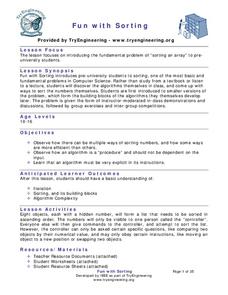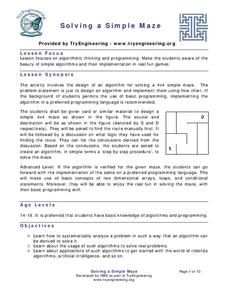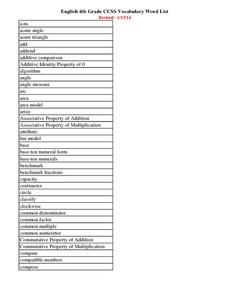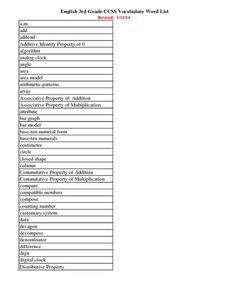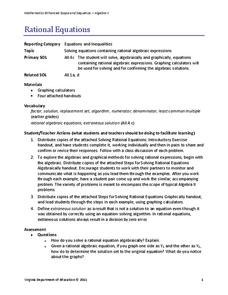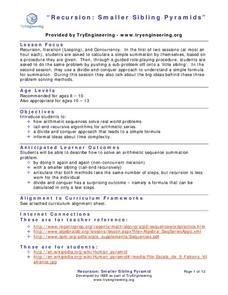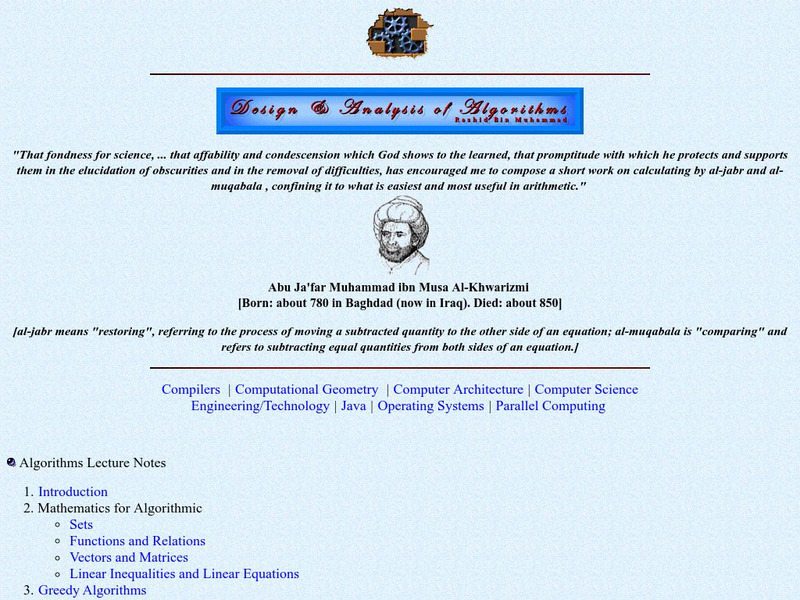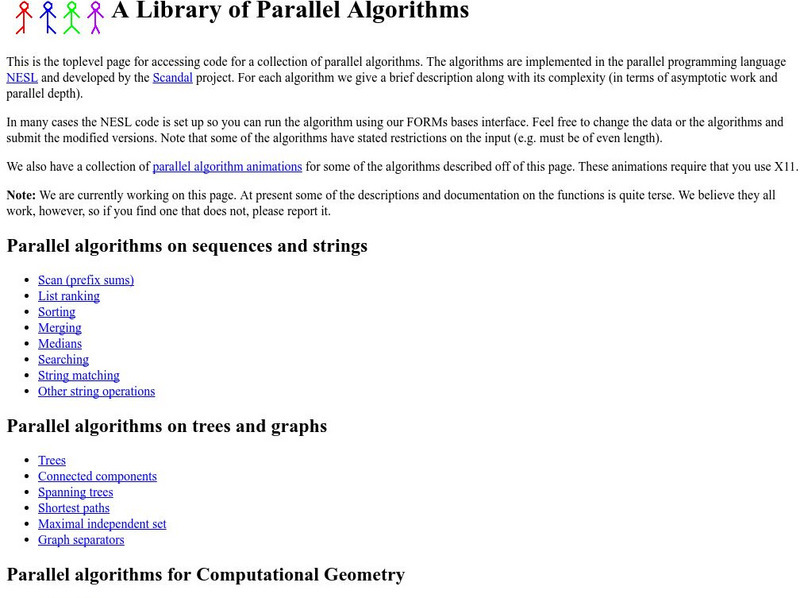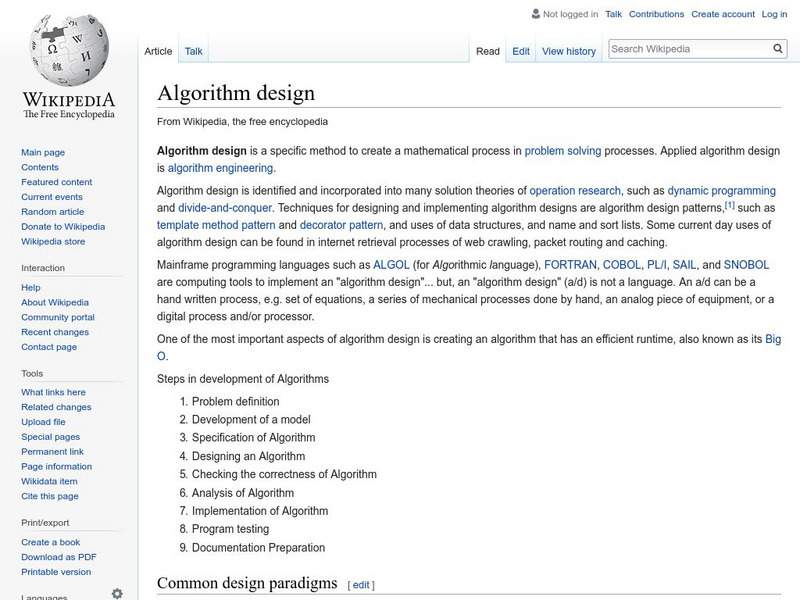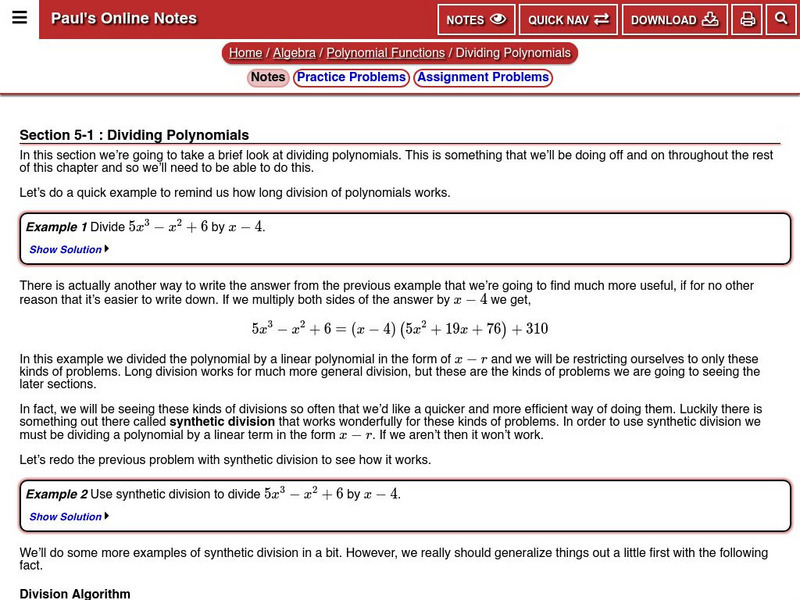TryEngineering
Sorting Socks is Algorithm Complexity
Use hosiery to teach computer science. Scholars use socks to develop a set of algorithms. They find ways to find a particular sock from a set and ways to sort socks. Finally, they use their algorithms to consider time complexity.
TryEngineering
Fun with Sorting
Who knew sorting could be so much fun? Scholars participate in a sorting activity where they develop questions to place a list of numbers in order. They consider how these questions can be used as an algorithm.
TryEngineering
Solving a Simple Maze
Solve a maze ... from a robot's point of view. In the lesson plan, your scholars build a small, simple maze from cardboard and then find a route from the start point to the finish point. They write an algorithmic process that a robot...
TryEngineering
Solving Problems with Decision Trees
Combat crime with computers. The instructional activity teaches young computer scientists about decision trees and how to use them. They consider telecommunications subscriptions and how decision trees can help detect fraud.
TryEngineering
Search Engines
Learn how to find things quickly and efficiently on the Internet. The lesson teaches how search engines work and how to efficiently use them. It includes an activity where groups develop search queries to find sites using given criteria.
Granite School District
5th Grade CCSS Vocabulary Word List
Develop the academic language of fifth grade mathematicians with this list of Common Core vocabulary. Accompanied by a series of word cards that support each term with examples and images, this resource is a valuable tool for any fifth...
Granite School District
4th Grade CCSS Vocabulary Word List
Help fourth graders make sense of the Common Core standards with this list of math vocabulary. Including a series of word cards that support each term with examples and images, this is an excellent resource to supplement into a teaching...
Granite School District
3rd Grade CCSS Vocabulary Word List
Support third graders with tackling the Common Core Math Standards using this list of vocabulary words. Accompanied by a series of word cards that demonstrate the meaning of each term with examples and images, this resource is great tool...
Virginia Department of Education
Rational Equations
Provide guidance and practice of the useful skill: solving rational equations using both an algebraic and graphical approach. Pupils solve increasingly more difficult rational equations using algebraic methods. After, they...
TryEngineering
Recursion: Smaller Sibling Pyramids
Get siblings to do your work. Scholars learn how to perform summations of arithmetic sequences in an innovative lesson plan. They use iterations, smaller siblings (tail-end recursion), and the divide-and-conquer approach.
Happy Maau Studios
Math Ref
Forgot how to multiply matrices? Well, this app can help. It is like a gigantic, well-organized reference card for all things math. Customize your personal reference material by adding your own notes and build up a personalized list of...
West Contra Costa Unified School District
Polynomial Division
Multiply the ways your scholars can find the quotient with polynomial division. A lesson introduces polynomial division via long division, synthetic division, generic area model, and using the definition of division. Learners then...
TryEngineering
Choose Your Best Way
Find the best path through town. The lesson teaches future computer programmers about networks and paths in graph theory. They develop a network of their towns to determine the most efficient path to visit each of their homes.
Kent State University
Rashid Bin Muhammad: Design and Analysis of Algorithms
This site contains the lecture notes from Dr. Muhammad's course on algorithm design and analysis.
Khan Academy
Khan Academy: Get Started With Algorithms!
What is an algorithm? It's a sequence of steps that you follow to solve a problem. In everyday life, you might have an algorithm for hanging up your laundry, efficiently going through a shopping list, or finding an empty parking space in...
Carnegie Mellon University
Carnegie Mellon: A Library of Parallel Algorithms
A page for accessing code for a collection of parallel algorithms.The algorithms are implemented in the parallel programming language NESL and developed by the Scandal project. There is a brief description along with its complexity (in...
Other
Geeks for Geeks: Graph Coloring|set 2 (Greedy Algorithm)
Graph coloring is widely used. Unfortunately, there is no efficient algorithm available for coloring a graph with a minimum number of colors as the problem is a known NP-Complete problem. There are approximate algorithms to solve the...
Cool Math
Coolmath: Coolmath4kids: Division: Standard Algorithm
Short tutorial that breaks down simple division step by step using the standard algorithm where you divide, multiply, and subtract, then repeat. Includes sample problems to try.
Government of Alberta
Learn alberta.ca: Mathematics Glossary: Algorithm
Get a visual and animated definition of what an algorithm is from LearnAlberta.ca's Mathematics Glossary.
Wikimedia
Wikipedia: Algorithm Design
A Wikipedia description of the process of designing algorithms.
Wolfram Research
Wolfram Math World: Euclid's Algorithm
This site from Mathworld.com provides a very detailed description of Euclid's algorithm of common divisors and a method of finding the greatest.
Paul Dawkins
Paul's Online Notes: Algebra: Dividing Polynomials
Detailed math tutorial features notes and examples that take a look at the basics dividing polynomials, introduces synthetic division, and gives the Division Algorithm.
Other popular searches
- Numerical Algorithms
- Division Algorithm
- Multiplication Algorithms
- Addition With Algorithms
- Addition Algorithms
- Subtraction Algorithms
- Standard Algorithm
- Math With Algorithms
- Partial Products Algorithm
- Partial Sums Algorithm
- Adding Integers Algorithm
- Dividing Algorithm

